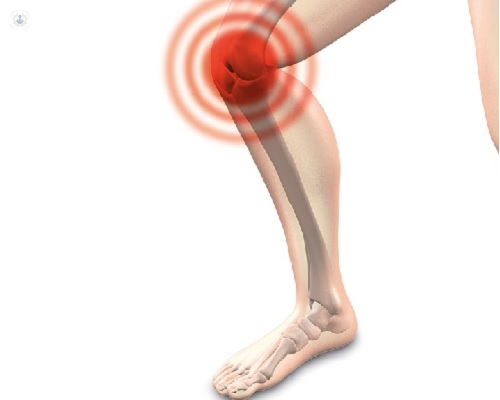Patellar Tendinitis, one of the most common sports injuries
Written by:Dr. Enric Castellet Feliu is a traumatologist and belongs to The Doctors, the select circle of top-level doctors in Spain. As an expert in patellar tendinitis, he will explain the details of his treatment and surgery.
What is a patellar tendonitis?
Patellar tendinitis is a lesion that affects the patellar tendon and is manifested by pain in the anterior aspect of the knee. The injuries that the patellar tendon presents are degenerative, cysts, nodules, calcifications and eventually partial rupture of the tendon.. The patellar tendon is the most vulnerable part of the so-called extensor apparatus of the knee that starts in the quadriceps, follows the cudrioccipital tendon, follows the patella and finally the patellar tendon.. This tendon represents a very short lever arm and must extend the knee.
Why does it mainly affect athletes and what are the most frequent causes of patellar tendonitis?
This injury affects mainly athletes because it is an injury that occurs due to overload. It is known by the jumper's knee because it is produced by the very continuous repetition of the jump. This makes it very common in basketball players, volleyball players but also in other sports such as tennis or even in runners. However, there are also other types of patients with less sports activity that can present patellar tendonitis. These are people who suffer from a series of factors predisposing to this injury, so it is important to perform a good physical examination to rule out deformities of the axes of the leg. either in the frontal plane or rotational defects of the femur and the tibia and especially of the tread, because a bad support of the foot can favor this type of injury.

What is the treatment?
The treatment consists of the application of ice, restriction of sports activity and administration of anti-inflammatories. If once this stage has been overcome, the chronic phase should be treated with physiotherapy, which will consist of the quadriceps muscle strengthening through eccentric exercises and stretching of the quadriceps, ischitibial muscles and calf muscles.. We can accompany you with massage in the painful area. In this phase can also help us applying a strap below the kneecap that surrounds the knee to reduce the loads in the patellar tendon.
If this treatment fails, do we have an alternative?
If these treatments fail, we have, on the one hand, the alternative of applying infiltrations, either derived from cortisone, which should be reserved for cases of exceptional exacerbation of the symptoms, since more than 2 or 3 infiltrations can injure the tendon, or infiltrations with the so-called growth factors or platelet-rich plasma, which can be effective although it must be remembered that up to now there is no research that really supports the efficiency of this type of infiltration, therefore we must be cautious with your administration. If all these treatments fail we have the surgical option that we can perform by traditional open surgery or arthroscopic surgery that will consist of the removal of all that injured tendon tissue and part of the affected bone of the distal pole of the patella where the tendon was inserted injured.


